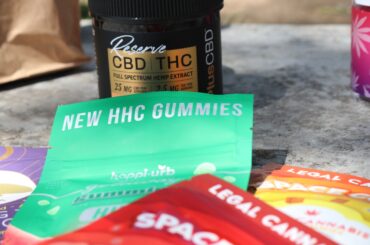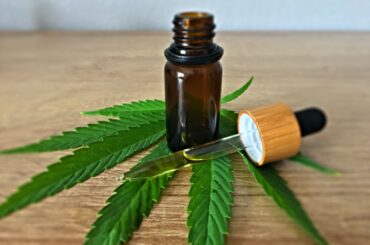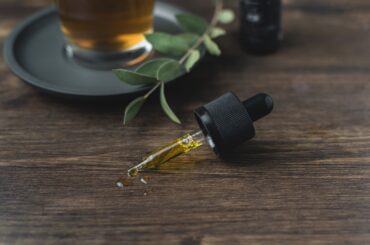Cannabidiol and tetrahydrocannabinol are different components sourced from industrial hemp and marijuana. Anyhow, several people who do not use either product might be confused between both. That confusion is natural because cannabis has many different components, and even experts in the industry do not know everything about those. Here, we will look at the distinction between both cannabinoids.
What Is Cannabidiol?
It is a cannabis component without any intoxicating effect. People use it for several health issues and as a recreational product. It can offer the user a feeling of being relaxed without THC’s high and other negative effects, such as paranoia and anxiety to name two.
Cannabidiol has been used for a long time to stop cancer, preserve cell integrity, and cope with other health conditions like chronic pain, mental disorders, and sleep disorders. The cannabis compound does not make the user stoned out of their mind. After THC, it is the most active form of phytocannabinoid in hemp.
What Is Tetrahydrocannabinol?
THC is another phytocannabinoid present in cannabis herbs. It is associated with the high effect of marijuana. Despite having benefits akin to cannabidiol’s advantages, THC is best known for its high effect.
Users who wish to experience cannabis’s benefits and that high effect typically go for THC-based goods. High concentrations of the compound are in marijuana, but its concentration in industrial hemp is less than cannabidiol.
Now that you know what cannabidiol and tetrahydrocannabinol are, we will discuss how both differ.
Cannabidiol Versus Tetrahydrocannabinol
Both phytocannabinoids are useable for a few similar health advantages. Anyhow, it is not possible to consume both interchangeably in the event you are trying to address a particular health condition.
You must keep in mind that research about cannabidiol and tetrahydrocannabinol is in its early phases. Therefore, there is a lack of scientific evidence that both works at a 100% level.
Cannabidiol can benefit people with inflammation, migraine, anxiety, seizures, depression, and post-traumatic stress disorder. Tetrahydrocannabinol is useable for appetite, tremors, pain, nausea, and sleeplessness.
Side Effects
Both components have a chemical structure that is comparable to the endocannabinoid system in our body, so these can interact with cannabinoid receptors. While both have a few potential health advantages, you may wish to think about some negative secondary effects before using one of these.
Marijuana or THC can affect your memory and heart rate as well as lead to anxiety. Besides that, you may have xerostomia and redness in the eyes after THC’s use. Anyhow, it is not shown to have any long-lasting or extreme effects.
Conversely, cannabidiol can not only change your desire for food but also result in weight reduction. Besides, you may be fatigued and dizzy after CBD’s use. Anyhow, every user is not likely to experience identical effects. Therefore, you should consult professionals and do some trial and error to discover what suits you best.
Tetrahydrocannabinol Versus Cannabidiol: Legal Status
The US federal government allows the trade, possession and use of cannabis derivatives with only up to 0.3% tetrahydrocannabinol. Anyhow, marijuana legislation is complex, and it varies according to state.
Some states’ laws allow industrial hemp derivatives, whereas others permit high THC goods for recreational and medical applications. Therefore, you should go through the laws in your state to confirm the legality of the cannabis derivative you are seeking to purchase there. If you do not do that, you are likely to face a legal penalty.
Will Cannabidiol Or Tetrahydrocannabinol Show Up In A Substance Screen Result?
The body will store both compounds in the internal fat and can appear in the test result. Even industrial hemp CBD might have small amounts of tetrahydrocannabinol, which would appear if you undergo a screening process for it. Therefore, it may be wise to avoid using phytocannabinoids if your present or future job requires it or you are scheduled to be screened.
Consumption Methods
It is possible to consume both phytocannabinoids in many different ways. Both come in flowers, oils, vapes, beverages, edibles and several other forms of products. It is vital to choose the consumption method on the basis of your tolerance levels and preferences.
You can use both compounds together as well. It is recommended for individuals who seek to have THC’s benefits, without having to experience the paranoia or anxiety related to it. Combining both cannabinoids can reduce THC’s intoxicating effects.
Precautions
It is a good idea to avoid using heavy machines or driving after one of these two cannabis components’ use. Besides checking your state’s laws, we would recommend the avoidance of mixing the components with standard medication. Are you on prescription or OTT medication? If yes, try not to use CBD or THC with it to avoid potential drug-drug interaction. It would also be good to seek your doctor’s advice about that combined use.
Takeaway
Cannabidiol and tetrahydrocannabinol may be similar with regard to chemical structure, but the location of their double bonds also makes them different. For the uninitiated, the term ‘double bond’ refers to a bond between one atom and another. Both cannabinoids are likely to appear in a drug screening result, but cannabidiol does not have any intoxicating element.
It is still worth noting that you may or may not get effects identical to what other people who use the two cannabis components get. Therefore, you should discover what fits you best and then stick to that.



